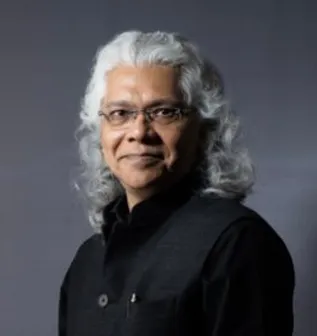-
CENTRES
Progammes & Centres
Location
The low hanging fruit has been plucked. The road ahead will need deeper and more impactful reforms at all levels of governments — Union, States and Local.

This article is part of the series 30 Years After: Review and Renew the Reforms Agenda.
Although Prime Minister PV Narasimha Rao’s 1991 reforms changed the business climate of India’s economy, they failed to address the underlying soil in which an economy grows or shrinks. The policy ended the License Raj but did not move a needle on Inspector Raj. Thirty years later, the latter continues to thrive. The sweeping powers given to the bureaucracy ride a well-oiled executive machinery that’s targeted at rent-seeking and corruption. Rao alone cannot carry this burden. Leave alone reform, successive Prime Ministers have not even examined these excesses. The Indian economy continues to be burdened by this infrastructure of illegal entitlements that slow the rates of economic growth and job creation. Despite three decades of continuing reforms that have changed the character of doing business in India, if Prime Minister Narendra Modi wants to give the economy another mega-push, he will have to fix this problem of abuse of powers and create an enabling mechanism at the Union level, such that States can follow through and end this tyranny.
The measure of the problem is humongous and out of tune with a 21st-century India. Take the scale. Out of 63 million enterprises spread across India, there are only 1 million formal employers. More than 98 percent of Indian employers stay small by choice. As a result, they get no access to institutional capital, talent, technology and supply chains. On the other side, they employ less than three employees on an average, leading to less-than-optimal job creation. This motivation to remain small has a sound survival logic. These companies want to stay under the regulatory radar of laws and rules that ensure they pay minimum wages, offer social security or provide safe and hygienic working conditions. This is not because they want to evade the political or societal objectives of the law but because the clauses have become monstrous and their breach beyond manageable.
Companies want to stay under the regulatory radar of laws and rules that ensure they pay minimum wages, offer social security or provide safe and hygienic working conditions
The moment an entrepreneur aspires for growth and his/her company raises its head to expand its scale and becomes part of the formal economy, it can lead to more than 400 compliances a year that become applicable as soon as the setup is formalised—overnight. As a result, there are clear incentives to stay economically small and administratively informal. This multidimensional, economic, and administrative problem has roots in India’s archaic complex regulatory environment. We term this a ‘formalisation tax’ on employers and companies; it is the biggest hurdle to scale. It is also the most important source of corruption.
India’s policy challenge is not merely to catalyse more enterprises but equally to nurture existing enterprises to enable growth on the economic and wealth side, and job creation on the political side. Once the policy fraternity focusses on reforming this—something we see as inevitable—the political returns will be faster and economic returns higher; they are the low-hanging fruits of India’s political economy. If the regulatory infrastructure can be eased to convert just 10 percent of its 63 million enterprises from informal to formal, 100 million new formal jobs can be created. However, the key binding constraint is what we call ‘regulatory cholesterol’, a universe of 1,536 laws, 69,233 compliances and 6,618 filings that businesses face at an aggregate.
Adding complexity to this mesh of hurdles is the fact that they change at a rate that’s administratively astonishing—there were 322 regulatory changes over the past month, 856 in the last quarter and 4,104 over the past 12 months. You need an army of compliance officers to keep track of, leave alone file, these changes. The problem articulated, here are some reform suggestions that offer to make doing business in India easier.
The key binding constraint is what we call ‘regulatory cholesterol’, a universe of 1,536 laws, 69,233 compliances and 6,618 filings that businesses face at an aggregate.
Altogether, we have identified eight reforms tributaries that can feed the rivers of economic growth and job creation and through them wash away the decaying debris of the past. With the objective of increasing transparency, raising accountability and reducing time spent on compliance management, this essay argues for compliances and filings becoming paperless, presence-less, cashless, faceless systems, while pushing for changes in administrative procedures.
There is no need to have ten different formats of wage registers and five different formats of muster rolls under different laws.
The UEN-based corporate profile of credit and risk along with an electronic document vault will reduce document forgery and fraud leading to deeper credit penetration and reduce Non Performing Assets (NPAs).
The government needs to create a centralised repository or an electronic gazette of all regulatory changes that impact enterprise.
The past six years have been exciting from an ease of doing business perspective. India has seen a major jump in its doing business rankings, from 142 in 2014 to 63 in 2019. The low hanging fruit has been plucked. The road ahead will need deeper and more impactful reforms at all levels of governments—Union, States and Local. These reforms will require tougher decisions, laser sharp focus and greater allocation of resources. Leaning on the COVID crisis, Madhya Pradesh has begun the journey, while Uttar Pradesh is aspiring to; Tamil Nadu and Telangana are on their way; other states must follow through. But above all, standing at the helm of affairs in the Union government as well as a large majority in Parliament, all initiations of compliance reforms, or what can be termed as Tier Three Reforms, lie at the door of Prime Minister Narendra Modi and his party, respectively.
The journey from 1991 to 2021 has served India well—in 1990, India was not part of the world’s top 10 economies; in 2021, it is the world’s fifth largest. It is expected to be the world’s third-largest economy within this decade and US $10 trillion within a dozen years. Lying under these macro-numbers are two distinct but disjointed ideas. Expectations and aspirations on the one side. And the need to create jobs, taxes and wealth on the other. The easy and immediate way to bridge them is by embarking on these compliance reforms.
The views expressed above belong to the author(s). ORF research and analyses now available on Telegram! Click here to access our curated content — blogs, longforms and interviews.

Gautam Chikermane is Vice President at Observer Research Foundation, New Delhi. His areas of research are grand strategy, economics, and foreign policy. He speaks to ...
Read More +